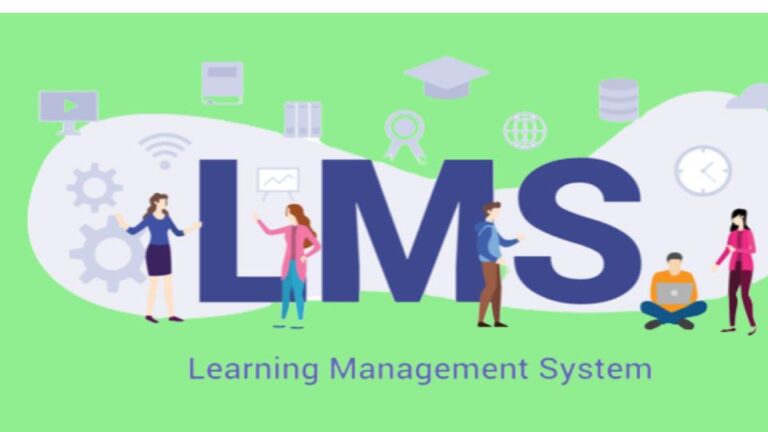Top 10 Reasons Why Your Business Needs to Adopt eLearning

Since learning guru Elliott Masie first used the term “eLearning” in 1999, the idea of instructing through a digital platform has expanded significantly and turned into a separate industry.
The global eLearning market is anticipated to reach $375 billion by 2026.
One of the largest markets for eLearning is business. Companies increasingly prefer to use eLearning to impart knowledge and foster the development of success-critical skills, from product training to employee onboarding.
Here are the top 10 reasons why eLearning is taking over the corporate world and why you should adopt it too, whether you’re using it for internal or external training:
1. Essential to The New Normal
There is no doubting that COVID-19 has significantly altered almost every aspect of life, particularly how business is conducted.
To stop the new coronavirus from spreading, more individuals are working from remote locations. Meetings are conducted via teleconferencing technology, and work is now turned in and reported by employees at various times during the day.
These days, face-to-face instruction is no longer practical. Businesses must embrace eLearning to continue employee training programs during a pandemic if they want their personnel to remain competitive.
In a time when face-to-face contacts are proven impossible, online learning via learning management systems (LMS) is the only viable approach for in-depth, effective development that respects the health and safety of entire organizations.
Additionally, online education won’t just be a fad. Employees are becoming more accustomed to setting their own schedules, and more organizations are realizing that they can maintain productivity even with mostly remote operations.
2. More Economical Training
Programs for traditional training may be highly expensive. The majority of the time, employees are required to attend training courses rather than working on their actual daily job.
Typically, after-hours training necessitates costly outings to conferences and workshops. To conduct training, instructors must be hired full-time. Each trainee must have their own set of printed course materials.
E-learning significantly lowers supplemental training expenditures. Companies can hold virtual group sessions for their staff without needing to reserve spaces or move entire departments, or they can allow employees to attend courses on their own time using registered equipment they already own.
To provide advice on course development without having to actually conduct training sessions themselves, learning and development consultants might be hired.
One time course development and deployment are required for instantaneous access by the entire organization via an LMS.
3. Enhances Business Partnerships
This program shows partners that your organization is eager to invest in their development because eLearning activates external training. It is an expression of trust in the partnership’s ability to produce results.
Partners are more likely to show commitment to a partnership that invests in their well-being as a symbol of trust than one that does not.
The parties also establish a culture of learning and sharing, which strengthens their business connection and allows them to communicate more freely. This also provides a strong framework for creating upcoming collaborations.
4. Expands the Influence of Your Brand
It can be difficult to keep the branding consistent when businesses must collaborate with third parties to promote their products.
Equally challenging is persuading partners to set aside a significant amount of time for in-depth product training given that doing so would need more of their time and resources.
The ease of eLearning makes it possible to sell internal training courses to channel partners, something that traditional training makes more difficult.
When accessibility is no longer a problem, partners are more likely to be convinced to attend training.
The next thing that happens is that these second and third parties have a better understanding of the brand of the primary organization and can correctly implement marketing and sales tactics.
5. Provides for Business Continuity
Even if learning retention is one of the objectives of training, there will be moments when students need to consult sources in order to recollect crucial details. Registered users of eLearning can rely on an easily accessible knowledge base.
Employees, partners, and even consumers can access the LMS by simply logging in to find answers to any questions they may have about a procedure or a product.
When solutions to foreseeable issues are readily available to users, operations can forward with the least amount of downtime possible.
Business continuity can be hampered by the need for people to call helplines or leaf through paper manuals.
6. Partner Performance is Better
Partners will perform better in their roles as a result of using eLearning for external training. It operates on the same tenet as providing staff members with the abilities and information required to meet internal business objectives.
Thanks to top-notch and convenient eLearning programs, partners that are fully prepared to handle product distribution, sales, and advertising will be more effective and require less help.
As they won’t have to ask everyone in the supply chain for every query, they can respond to consumer concerns more rapidly. The overall customer retention rate rises as more consumers are happy.
7. Higher Productivity
Training often increases productivity since trained employees can complete tasks faster than unskilled ones.
Due to its inherent innovation and use of cutting-edge technologies to deliver training in methods that put the individual learner at the center, eLearning provides organizations with a way to further increase their productivity.
For instance, complicated ideas are clarified for visually inclined students with video content. Mixed reality tools immerse users in realistic simulations. Microlearning modules with interactive multimedia provide for enjoyable and easily digestible teaching.
These claims are supported by the data. According to IBM’s The Value of Training report, using learning technology results in gains to staff satisfaction/engagement of 19%, customer satisfaction of 17%, and enhanced productivity of 14%.
8. Improved Retention of Employees
Employees will look for better possibilities when they believe their employers aren’t giving them the tools they need to excel at their work or the opportunities they need to advance.
In fact, 70% of workers state that they are at least somewhat inclined to leave their current employer for one that places a higher priority on employee growth.
Workers who use eLearning have access to a wide range of excellent instructional resources that they may use at their own speed.
The money spent on online training shows workers that their managers value their development and that they have a future at the company that is worth sticking around for.
9. Tools for Measuring Built-In
Impact evaluation is a fundamental necessity for any training program. Due to its digital structure, which can automatically record every activity made through the online training platform, eLearning greatly streamlines this procedure.
A decent LMS can produce thorough reports that track anything from evaluation results to course completion rates. The main benefit of these built-in measurement tools is how simple it is to connect data to pertinent KPIs.
10. High Scalability
The scalability of traditional training methods is severely constrained by financial restrictions.
When done across many departments and with outside partners, in-person training can be prohibitively expensive, whether it involves booking multiple sessions in different locations or creating tangible resources for learners to utilize.
In contrast, eLearning makes it simple for even the most frugal firms to scale their training initiatives. Because the technique is software-based and just needs devices with an Internet connection, lessons may be distributed widely at no additional expense.
There are LMS companies who also provide cloud-based solutions, so no additional software, hardware, or on-site maintenance is required.
Conclusion
eLearning is incredibly helpful for internal staff development and partner staff development.
Adopting this cutting-edge training methodology for your company will have a positive impact on a variety of areas, including cost savings, process optimization, and growth facilitation.
Additionally, eLearning gets you ready for the post-pandemic era and adapts to the changing demands of the contemporary digital workplace.






